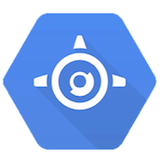Speed optimization
On our production sites we have noticed that speed isn’t Google App Engine’s strong suite. Sure you can (and should) tweak the application and SQL settings for your needs, but we prefer to have even more “umpf”. There are many ways to speed up Google App Engine sites, here are some of them.
Google App Engine settings
Most of the App Engine specific tweaks are still only available at the old version of management console.
Google PageSpeed
PageSpeed does amazing things for front-end performance with basicly zero configuration. In most cases you can just enable it with default settings without problems, but if you experience some issues just tweak the enabled components in your app.yaml.
CombineCSS and WordPress
To make the CSS combination of PageSpeed work nicely with WordPress, there is one small tweak to add to your theme: PageSpeed doesn’t want to alter the behaviour of your application and if it thinks an optimisation will change something it skips the optimisation.
By default WordPress adds an id attribute to every linked stylesheet element added via wp_enqueue_style. PageSpeed thinks that you need these attributes and doesn’t combine these CSS files. Since you probably don’t actually need them, we wan’t remove those. It can be done by adding this code to your functions.php:
function remove_stylesheet_id($link) {
return preg_replace("/id='.*-css'/", "", $link);
}
add_filter('style_loader_tag', 'remove_stylesheet_id');
Google Cloud SQL settings
For most sites the D0 tier is enough. Queries by WordPress are quite simple and if it’s the database that slows your site down, you should reduce the amount of queries (cache things) or look deeper into what is causing these slow queries and fix that.
Since the database isn’t on the same physical server as your app instance, there will always be some latency added. WordPress isn’t especially well designed for this kind of situation, so keeping the amount queries low is more important than in a one server situation.
Be also sure, that the location of the Cloud SQL database follows your app engine app, so the latency would be as little as possible.
Theme layer and WordPress optimization
Caching
“Cache all the things” is a key rule when developing fast websites. WordPress has few different levels for caching and you should use all of them. App Engine provides us Memcached, a superfast caching backend. Memcache is a separate service that is accessible from all the App Engine instances. So when a new instance of our site spins up it can immediately access previously cached data.
The starter project includes Batcache (advanced-cache.php) and simple Memcached object cache (object-cache.php) together with Batcache manager plugin. Batcache caches full html pages, so the response is quite immediate. The Batcache Manager helps invalidating the cache, but can only handle simple cases. So we can’t use lifetime long cache times. We’ve been using times from 30 minutes to 2 hours depending the site contents and activity.
Object cache stores - wait for it - objects! So instead of hitting the database we get the details of an object from cache. But we’ve noticed that complex pages can hit the memcache up to few thousand times and even the cache is fast, we end up having quite a lot of network latency. So we need something more clever.
Wordpress has a nice API for for ones own caching called transients. WP uses transients internally but they’re very easy to use when developing sites. Using transients we can cache bigger parts of the site that stay same from page to page and change infrequently. (TODO: Add code examples)
Caching plugins
Voce Connect has developed a bunch of performance related plugins. These two are our favourites:
Voce Cached Nav caches (not so surprisingly) navigation menus. It’s very easy to use, just replace the calls for wp_nav_menu with the plugin’s alternative. Plugin handles the active and parent item classes, so we’re good. Just faster. And that is awesome, since WordPress’ menus are a pain in the performance ass.
Another epic surpise: Voce Widget Cache caches widgets. The usage requires a bit work but also allows quite sophisticated invalidation mechanisms. If you need some page specific visibility rules, at least the JP Widget Visibility plugin works fine together with Voce Widget Cache.
External solutions
Our production stack also includes external reverse proxy (Varnish) server for caching the whole sites as static pages. This way we get the scalability and ease of use of Google App Engine but always lightning fast response times. We have a robust DNS-management stack for overriding the Varnish server if there are huge amounts of traffic or some issues with Varnish. After this happens, Google App Engine takes the hit and scales instances accordingly.

